Talena Winters's Blog, page 11
March 16, 2022
The Undine's Tear on tour!
I’ve got some very exciting book news in this post about both of my current series, starting with the upcoming blog tour for The Undine’s Tear (Rise of the Grigori Book 1).
What’s a blog tour? Well, it means my book is going to be featured on a bunch of blogs. In this case, thirteen. And it also means, in this case, that there will be a whole bunch of new behind-the-scenes content that I’ll be creating for these blogs to post.
Kind of like the special features on a DVD (remember DVDs?), but it will be hosted in thirteen different places all over the Internet.
Consider this your DVD menu. :-)
So, here’s where to find posts and what dates they’ll be going live. (Hint, it’s always on Wednesday, starting next week.) And be sure to scroll to the bottom to hear about the prizes.
Yep, you heard me. :-)
(Read to the end to get news about my current project.)
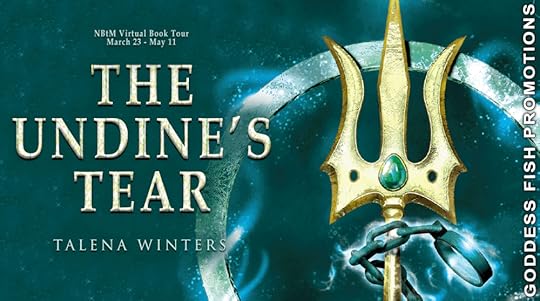 March 23:Lisa Haselton’s Reviews
March 23:Lisa Haselton’s ReviewsBehind-the-scenes about the book and a summary of my journey to writing.
March 30:Viviana MacKadeAn introduction to the Rise of the Grigori series.
Long and Short ReviewsTopic still to be determined. (I’ll update this when I’ve written it.)
April 6:Write. Read. Live. (Cherie Colyer)A behind-the-scenes of my writing life and reading habits.
Character Madness and Musings (Jen Baxter)A deep character dive into the head of either my protagonist or antagonist. (Who will it be? Click through on April 6 to find out.)
April 13:Sybrina’s Book BlogThis topic is up to me. What would you like to hear about? (Comment below.)
April 20:Andi’s Young Adult BooksExact topic to be determined.
The Faerie ReviewA review of the book.
April 27:All the Ups and DownsWhat fantasy world would I like to live in?
fundinmentalA review of the book.
May 4:Kit ‘n KabookleAn interview exploring the world of the Rise of the Grigori with some fun questions no one has asked before. Plus a review.
Westveil PublishingAnother topic that’s up to me. What shall it be? Hmm…
May 11:ArcheolibrarianTopic to be announced later. Plus a review.
So, as you can see, it will be an exciting couple of months for folks who love this series. Watch my newsletter and social media channels for reminders of when each review goes live.
And! That’s not all!Yes, now it’s time to talk about the prizes.
I will be awarding a hardback copy of The Undine's Tear (Rise of the Grigori Book 1) and also The Sphinx's Heart (Rise of the Grigori Book 2) (an approximately $100 CAD value!) to a randomly drawn winner (International Giveaway) via Rafflecopter during the tour! So make sure to stop by these lovely hosts’ blogs and comment for your chance to win!
And tell your friends, okay?
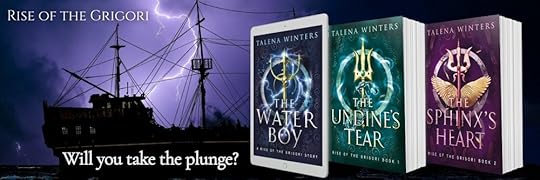
Psst… in case you’re new here, the prequel novella to this series, The Waterboy, is available for free to newsletter subscribers.
Current WIP News:
Lastly, while I’m updating the blog, I wanted to let you know the progress on my current manuscript, Every Star that Shines.
And, the news is, as of the end of this week, the first draft will be done! It goes to my developmental editor and beta readers on March 28, so I’ll be cramming the revision into the next week and a bit, but it’s already in pretty good shape, so I’m not worried about the short turnaround.
I’m so excited to share this sweet romance story with you. It turned out even better than I thought it would. You’re going to love it. :-) (If you’re the kind of person who likes reading sweet romance, that is. I mean, I guess I shouldn’t just assume.)
I’ll post again soon with an update on this project and, hopefully, an excerpt from the revised draft.
If this is the first you’ve heard of this project, it’s the first book in a new sweet small town romance series set in an analog of my hometown, Peace River. I hope locals will love seeing some familiar scenery and landmarks in these pages, as well as a distinctly Peace Country vibe. But don’t worry—all the people are a hundred percent fictional!
To learn more about the book, go here.
Happy Wednesday, friend! Talk to you again soon!
December 28, 2021
God Rest Ye Merry
The older I get, the less likely I am to making sweeping statements that draw black and white moral lines.
Maybe that’s because I’ve reversed my position so many times, and I hate eating crow. But, let’s be honest, if we aren’t learning and growing and changing, then we’re probably dead.
I have blogged many times about grief being a major catalyst for change—the deeper the loss, the closer to your core grief is able to shift your perspective. And one of the biggest shifts loss has worked in my own perspective is to both broaden it to see what’s really important, and to focus on those important things while shaking off what isn’t.
That’s rather ephemeral, so let me get specific.
I gave my life to Christ when I was fifteen, and I was both fervent in my devotion and in my efforts to express that devotion in ways I believed were appropriate. I got rid of all music and books that I believed were likely to take my thoughts away from a worshipful state. I eschewed watching movies that fell into the same category. I did my best to live a life worthy of the grace I had received.
So when I learned of the pagan origins of Christmas in my early twenties while pregnant with my first child, after much wrestling with my emotional attachment to the holiday, we stopped celebrating it. Fortunately, my husband is equally as devoted to living a godly life as I am. He didn’t have the same conviction about Christmas I did, but he went along with it because he was honouring my beliefs and he did see my point.
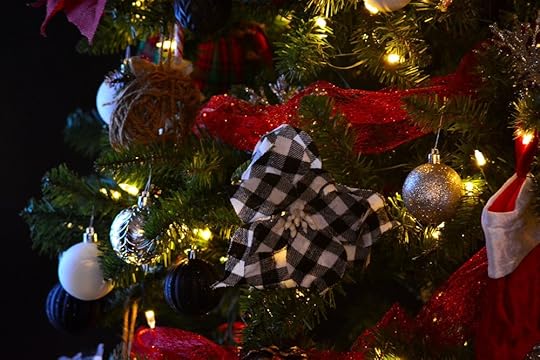
I, like so many people in the world, have a certainty-seeking personality. Not many of us can accept how little about our own lives we can control, and some of us have a harder time than others. I am a rule-follower, because following rules and strictures has been a proven way to navigate through life’s dangers most of the time. The problem is when we adhere to rules instead of the intent behind them. Christ even chided his own disciples for this.
My personality hasn’t really changed. Thank God, my perspective certainly has—because grief shows us that no amount of certainty-seeking will truly give us control of our lives.
Starting with several losses in 2015, I began to absorb the meaning of verses such as “what I desire is mercy, not sacrifice,” (Hosea 6;6) and “‘Love the Lord your God with all your heart and with all your soul and with all your mind.’ This is the first and greatest commandment. And the second is like it: ‘Love your neighbour as yourself.’ All the Law and the Prophets hang on these two commandments.” (Matt. 22: 37-40 NIV)
Because of my beliefs, I spent many years being angry at Christmas, and at Christians who perpetuated Jesus as the “reason for the season.” I mean, there’s no getting around the fact that Jesus wasn’t born on December 25, it was a holiday meant to celebrate the return of the sun—which was worshiped as a god in many religions—to the northern hemisphere. And that many of the traditions associated with Christmas are directly traceable to pagan traditions, which many pagans still celebrate with reverence today.
(But, with the truly human ability to accept conflicting dual realities, I bore no hesitation continuing to use the common names of the days of the week, most of whom were named after Norse or Roman gods, and the months of the year that had the same origins.
But I digress.)
I have gone through many phases on my walk with God, and every choice I made was out of a desire to express my worship in a way that was pleasing to him. From my upbringing in a very rule-focused denomination to my early adult years in a charismatic church, I saw the gamut of how people expressed worship. But it took me a long time to realize that it’s not the expression of worship that matters most to God, it’s the intent behind it.
Isaiah 58 (NIRV):The Lord told me,
“Shout out loud. Do not hold back.
Raise your voice like a trumpet.
Tell my people that they have refused to obey me.
Tell the family of Jacob how much they have sinned.
2 Day after day they worship me.
They seem ready and willing to know how I want them to live.
They act as if they were a nation that does what is right.
They act as if they have not turned away from my commands.
They claim to want me to give them fair decisions.
They seem ready and willing to come near and worship me.
3 ‘We have gone without food,’ they say.
‘Why haven’t you noticed it?
We have made ourselves suffer.
Why haven’t you paid any attention to us?’
“On the day when you fast, you do as you please.
You take advantage of all your workers.
4 When you fast, it ends in arguing and fighting.
You hit one another with your fists.
That is an evil thing to do.
The way you are now fasting
keeps your prayers from being heard in heaven.
5 Do you think that is the way I want you to fast?
Is it only a time for people to make themselves suffer?
Is it only for people to bow their heads like tall grass bent by the wind?
Is it only for people to lie down in ashes and clothes of mourning?
Is that what you call a fast?
Do you think I can accept that?
6 “Here is the way I want you to fast.
“Set free those who are held by chains without any reason.
Untie the ropes that hold people as slaves.
Set free those who are crushed.
Break every evil chain.
7 Share your food with hungry people.
Provide homeless people with a place to stay.
Give naked people clothes to wear.
Provide for the needs of your own family.
8 Then the light of my blessing will shine on you like the rising sun.
I will heal you quickly.
I will march out ahead of you.
And my glory will follow behind you and guard you.
That’s because I always do what is right.
9 You will call out to me for help.
And I will answer you.
You will cry out.
And I will say, ‘Here I am.’
“Get rid of the chains you use to hold others down.
Stop pointing your finger at others as if they had done something wrong.
Stop saying harmful things about them.
10 Work hard to feed hungry people.
Satisfy the needs of those who are crushed.
Then my blessing will light up your darkness.
And the night of your suffering will become as bright as the noonday sun.
(Emphasis mine.)
Grief changed how I looked at Christmas. I began to see how little it mattered that the traditions associated with it were borrowed from paganism—the significance of a symbol is the significance you give it. (That’s because stories are so very powerful.)
Not only that, God will use anything—and I do mean anything—in order to accomplish his primary purpose, which is to bring us into relationship with him. Which is probably why Christmas has become a time of year when so many people are willing to at least talk about Jesus and the beliefs of Christianity, even if they don’t ascribe to them themselves. And here in the north, the beauty and light and joy of the holiday is a true balm in the middle of a long, dark season. I believe God is love and the source of joy, and if the holiday brings joy to so many and is known as a time of love and family, how could I continue to resent it?
If God doesn’t waste Christmas, why was I?
So, while I’d softened toward the idea of Christmas over the last several years, it wasn’t until the emotional darkness of these pandemic times that we actually embraced bringing the light-filled traditions of Christmas back into our home.
This year, we celebrated Christmas for the first time in eighteen years. It was simple. It was lovely. And it was perfect.
Unfortunately, just as God sanctifies the broken and unholy, evil twists the beautiful and holy. While this is a happy time of year for many, it is not for all, and especially those that have experienced loss. In this time where our entire world is experiencing grief and uncertainty on a scale unprecedented in our generation, there are probably many struggling with the holidays like never before.
When my sister asked me why we got a Christmas tree, I said “To bring some joy into this crap-tastic year.” But while the tree was beautiful, and I enjoyed the twinkling lights for the past month, it wasn’t the tree itself that brought the most joy, but the reminder that God brings beauty into the darkest and most uncertain times. He never leaves us, nor forsakes us. And he is in the business of making the broken beautiful.
I hope this season brought a similar reminder to you. Even if you are missing loved ones or your financial situation is difficult or you don’t even celebrate Christmas, remember that you are not alone. These are difficult times, friend, but there is still joy to be found, if you look for it. While Jesus didn’t come at Christmas, he did come, and he is still our Emmanuel, which means “God with us.”
God bless, my friend. I hope you had a merry Christmas, and I wish you a very happy New Year.
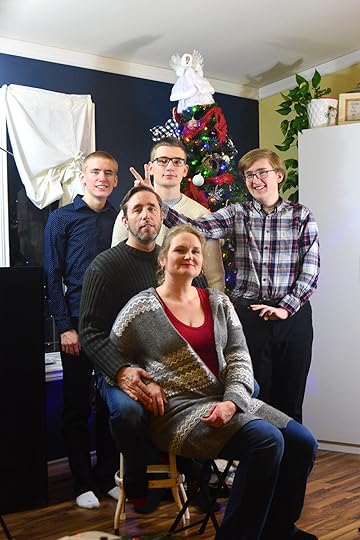
This is how we roll.
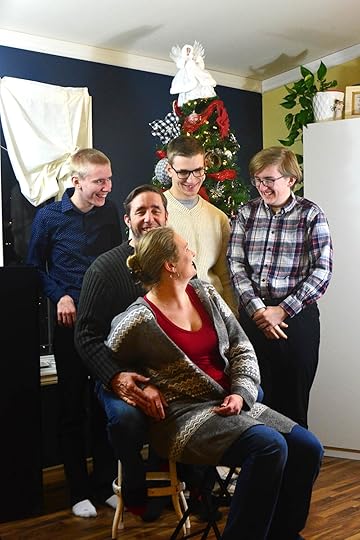
Because it’s more fun that way.
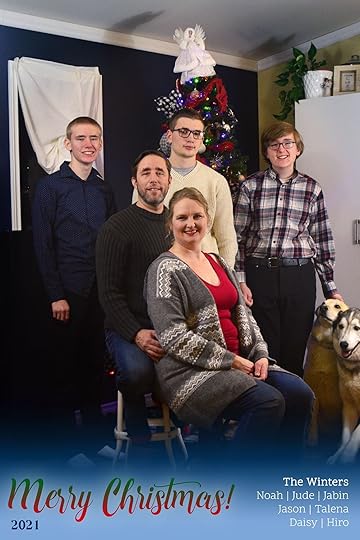
Merry Christmas/Happy Holidays from our family to yours.
ICYMI: My short story All I Want for Christmas will be free until January 2. Click here to check it out, or search on your favourite platform.
December 12, 2021
Does Insomnia mean I'm recovering from Burnout?
It’s the middle of the night on a Saturday, and I can’t sleep. (Well, it’s technically Sunday now.)
My brain is going in circles around many things, so I thought I’d dump a few of them out here to see if that helps matters at all. The worst that happens? I’ve updated my blog. So there’s that.

Image courtesy of Unsplash. But’ tis the season for auroras here, too.
I’ve been struggling with how much I’ve been struggling with keeping my blog updated this year. (Yes, I have feelings about my feelings too.)
I’m not sure why it’s been so difficult, but I think it’s a combination of factors. A hyper-focus on finishing my book when I knew that writing was all I really had time and energy for was a good part of it. But honestly, this blog has traditionally been a place where I dump out my thoughts, some of them quite personal. When the pandemic started, I renewed a daily journalling habit I hadn’t had since my early twenties, and I think that has filled much of the need I had to figure things out through writing.
In addition, the past year and a half have felt like a dangerous time to say personal things on the Internet, and I haven’t had the emotional fortitude to take the risk like I once did.
Also, being in recovery from burnout means I have had limited output energy. Since sources of stress kept happening without diminishing a whole lot (beyond the initial changes I did of shedding things that were overwhelming me), all the energy I had available to me had to be focused on the most important things in my life. This, above all, is probably why this blog has fallen by the wayside more often than not.
And even when I did have a little energy, which wasn’t often, the experience of being burnt out left my creative well dry. So dry. Writing my blog and writing my author newsletter are both activities that used to fill me up and give me energy. This past year, they have both been another source of energy drain.
But, I think that’s starting to change. Here’s my evidence:
I’m returning to my old bio-rhythms.Until 2021, I was always a staunch night owl. Even though I’d been able to retrain my body to get up early for short periods of my life when a job or school or some such required it, my peak energy has never been in the morning. Even when I had very young children and was often sleep-deprived, I found it more energizing to stay up and feed my soul* by scrapbooking for an hour or two after my kids went to bed than to go get a full eight hours sleep, and I would frequently go to bed around 1 a.m.
*Knowing what I now know about my CliftonStrengths, I recognize that it was my #1 Achiever, supported by several of my other top Strengths, that had this need. As a young mom, I often felt like I accomplished nothing of lasting value in my day. Finishing a scrapbook page was something that wouldn’t be undone the moment my children woke up, and it satisfied my urge for creative output. (I was also blogging at the time, and on nights I didn’t scrapbook, I’d usually blog. Sometimes I did both.)
Anyway, the move into our new house in January coincided with my complete and utter burnout. I’ve flirted with burnout many times, but this was the first time it actually happened. (You can go back to my earlier posts this year to read more about that, if you wish.)
I’ve since learned that there are different types of burnout. This was an energy/life system burnout for me. Fortunately, that meant my creativity didn’t dry up and I was able to keep writing, even though it was harder. (It probably would have been better if I’d taken a break from writing for a while, but I didn’t feel I had the time for that. Because, well, I didn’t, unless I wanted to cancel my pre-order a second time.)
So, there I was, burned out and suddenly requiring at least eight to ten hours of sleep a night—every night, not just on weekends—if I wanted to function at all. But that wasn’t the only reason I shifted my schedule to mimic a “third bird” (the majority of folks who are not larks [morning people] nor owls [night people], according a recent interview I heard between Daniel Pink and Paula Plant on the Afford Anything podcast). In our new house, the master bedroom has an en suite with French doors situated in such a way that when the lights are on in the bathroom, they shine through the sheer curtains right into the eyes of the person in bed. In addition, the fan comes on with the light—no way to easily rewire it, we tried—and it is super loud. And my husband is a light sleeper.
So, around February of this year (maybe earlier), I decided to try to align my schedule with my husband’s in order to not make him sleep-deprived by waking him up when I came to bed. And, for the first time, I was able to successfully get to bed around ten or eleven at night. Some nights I would actually crash around 9:30. This had never happened before in my life unless I was sick. (In a sense, I guess I was sick, just not in the way you’d usually think.)
For the past year, I can count on two hands the number of times I stayed up later than that… until a few weeks ago.
Maybe it’s the mental and emotional freedom of being finished The Sphinx’s Heart.
Maybe it’s that my editing schedule has also been a little lighter for the last month.
Maybe it’s that I’ve been filling the temporary breathing space in my schedule with more nights off to watch TV with my family and reading more fiction books.
Maybe it’s all of the above.
Whatever the reason, I have literally lain awake for an average of two hours a night before crashing for most of the past month.
Not only is this annoying, but it feels like a waste of time to me. If I’m going to be awake, I feel like I should be knocking a few things off my to-do list. Or at least reading.
Unfortunately, I’m often not yet so alert that I feel it’s worth getting up and leaving the room to do so. (Except tonight, obviously. Current time: 2:10 a.m.)
So, overall, I guess this is an improvement? However, I’m a little concerned, too. If my body swings back to its old night-owl tendencies, I’m going to have to figure out how to make other life patterns work around my husband’s needs. His schedule is much less negotiable than mine, after all.
And if I’m not up before my family leaves in the morning, the cats feel the house is fair game as a theme park for kitties. It’s not worth the stress. (Besides, I find I quite like seeing sunrise across the field through my window in the morning.)
Could be interesting around here until I figure this out…
Writing NewsIn other news, I’ve started on my next novel, and I’m super excited about it. It’s going to be the first book in a sweet small town romance set in an analog of my own community (which I’ve decided to call Peace Crossing in the book). The current estimated release date is next September.
I also released my novelette All I Want for Christmas to retailers last week, after a polish and a cover update. (I wrote this for my patrons a few years ago. But, in case you go looking for my Patreon page, I’ve had Patreon on hold for quite some time because I couldn’t keep up. And I don’t think I’ll be firing it up again anytime soon.)
The story will be free for the rest of the month. It’s about a foster kid who just wants a family, and a man who needs to enlarge his heart a few sizes to know he needs one. You can learn more on the book’s landing page.

All I Want for Christmas (A Peace Country story) by Talena Winters. A heartwarming holiday story, currently free on all retailers.
There’s more I could say, but I’m finally crashing, so I’ll save that for another time. I’m looking forward to two weeks of holiday at the end of this month, so maybe I’ll have a few more late-night blogging sessions then. Hard to say. Anything could happen… especially if I’m feeling well-rested and am not putting out a lot of other creativity during the day, haha.
Happy December, friend. I hope you are also finding time to rest and rejuvenate during this season. And if life is not giving you the luxury, I pray you rely on the One who can bring you rest, even in difficult times.
Now, let’s see if I can sneak into bed without waking up my husband…
November 26, 2021
So This is What it Feels Like?
For the first time in years, I find myself without an imminent deadline.
It’s the strangest feeling, and it’s having the most freeing effect on my mind and emotions.
I’ve finished all my editing projects that will be due this year. (I have one starting in mid-December, but there is time scheduled in for a two-week break over the holidays and it won’t be due until January.) I finally published The Sphinx’s Heart, and the majority of the launch activities are behind me. I’ve even started working on my next book, but I feel as though I’m still on track to reach my goal timeline there.
And, for the first December since 2015, I am not about to start a cycle of magazine reporting for the next issue.
So, is this what it feels like to be all caught up?
(On work. Not my housework. Please ignore the box of Halloween costumes still sitting in my living room. Ahem.)
Okay, so you probably noticed me slip in there that I finally published The Sphinx’s Heart! Woot!
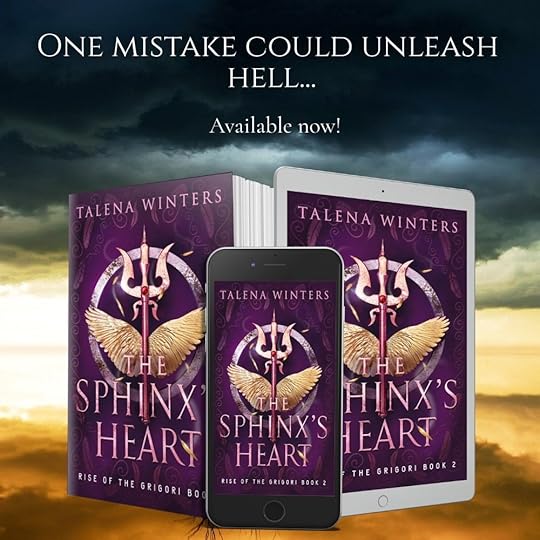
As I suspected, the book turned out to be a whopper—305,000 words, or over 1,000 manuscript pages (which I fit into 838 for the print version). Yikes. But the early readers don’t seem to mind. I particularly loved this review the book received from an advanced reader:
Fantastic! Dare I say I loved the second installment in the Rise of the Grigori series even more than the first? Yes I do!— Brenda Butler
Action packed from page one all through to the end. A page-turner that was hard to put down.
I highly recommend this to anyone that enjoys a great Fantasy Adventure.
Cannot wait for the series to continue!
So, now that that’s behind me, what next?
Yes, I’m always looking for what’s next. And the logical answer might seem to be “write Book Three,” but to be honest, writing this book was a long, arduous project and took a lot out of me. I need a break and some time to refill the creative well. I need to do research, and think. These books require so much thinking!
For the last couple of weeks since it left my hands, I’ve been reading way more fiction books than normal. (Not that that would take much, let’s be honest.) And I’ve been finishing an editing project, which I finally put to rest on Tuesday. So it’s really only been this week that my mind has finally been able to relax a little.
So this is what it feels like.
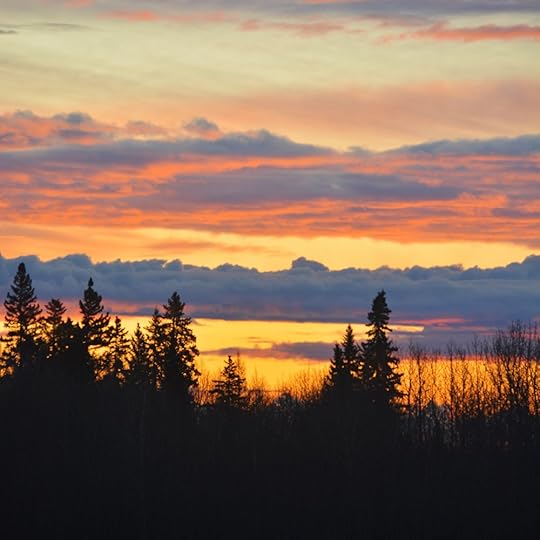
I managed to capture a few of the glorious sunrises October and November brought us.
Unfortunately, no matter how many deadlines crunches I’ve got my head down to meet at any given point, life still goes on. Tomorrow I’ll be watching the live stream of my aunt’s funeral, who was recently killed in a car crash. I have a lot of uncles and aunties, and Barb is the second one I’ve lost. Both have been on the youngest end of the spectrum on the respective sides of my family they belonged to. It’s sudden. And hard. And one more person and situation to grieve in a year that has had so very many.
Having less work to focus on has left me with more time to feel overwhelmed and helpless at how little I can do to help those suffering because of lost loved ones or livelihoods, whether due to a pandemic, natural disasters like the flooding in BC, or the accidents and illnesses that are always with us.
I’m trying to relax and slow down and let myself process all the feelings I’ve mostly been pushing aside for the last year. But I also feel the compulsion to do, and what can I do but continue to write stories that bring hurting people a little joy, and point them to the source of true joy who is the only Person who could possibly have gotten me this far? And who is holding Aunty Barb in his arms right now?
I don’t allow myself to just rest in his arms often enough. But right now, I’m trying.
So this is what it feels like.
Huh.
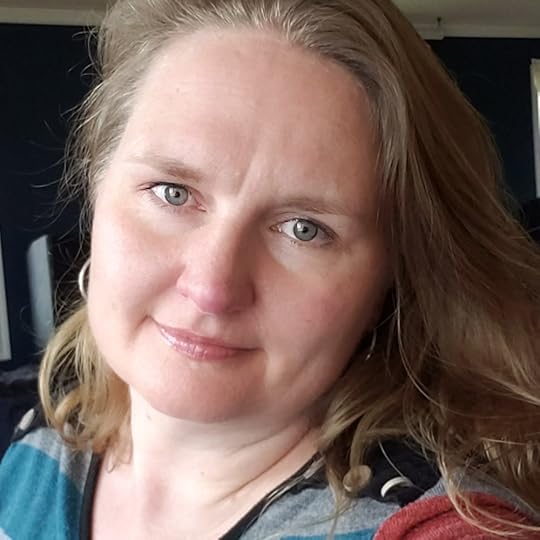
The face of a girl who just finished a massive project and is pretty darn happy about it.
September 24, 2021
No, I'm Not Dead
Oh, my poor, neglected blog. This year has been hard on a lot of things, and you have not escaped the fallout.
Whenever someone goes dark on their normal social channels, I always have the niggling wonder if they’ve passed away. This year, that concern has never seemed more legitimate.
However, as of today, I’m still on this side of the dirt. This year has been hard emotionally and the last couple months have had several stressful events in them which have eaten up any time or energy and most of the desire I had to blog. I mean, in theory, I have lots to talk about. But often when I start thinking about it, I feel I have very little to say.
I think the problem is in part due to the idea that I’ve built my brand on being inspiring, and I’ve been feeling anything but inspired lately. How can I inspire others when I’ve been feeling so uncertain about anything myself?
The biggest hindrance has been time, though, and by the end of this post, you’ll know what’s been filling it instead.
Books UpdateThe Sphinx’s Heart in Final Revisions, Coming November 11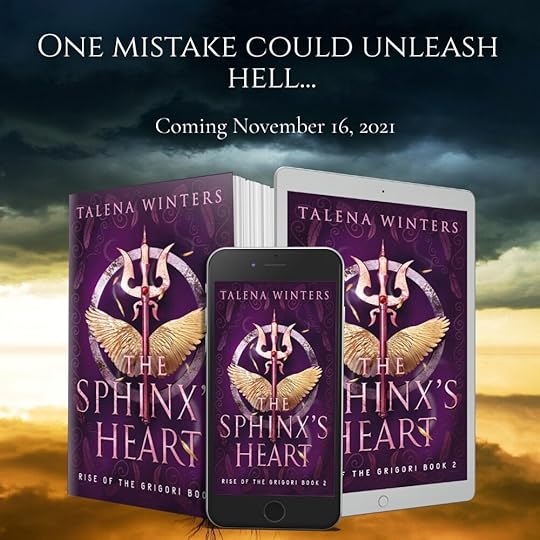
This past Tuesday night, I sent the final section of the manuscript for The Sphinx’s Heart to my editor. The next day, she sent me the first half of the book back to start revising for the third pass. I haven’t started yet because of an editing project I needed to wrap up this week (just finished, thanks for asking), but I’ll be diving in to that on Monday.
I’d had the eBook on pre-order for October 12, but because this revision took longer than I’d hoped (as has everything else in the past 19 months), I had to bump it as far as Amazon would let me. The new release date for the eBook is November 11, and I hope the print book will be ready by the following week, but I’ll keep you posted on that.
It hasn’t quite sunk in that this project, which has been almost a full-time job on its own for the past two and half years, is now coming to completion. I’m excited and a little nervous. Life seems open and full of possibility again.
New Cover Editions for Finding Heaven Available October 1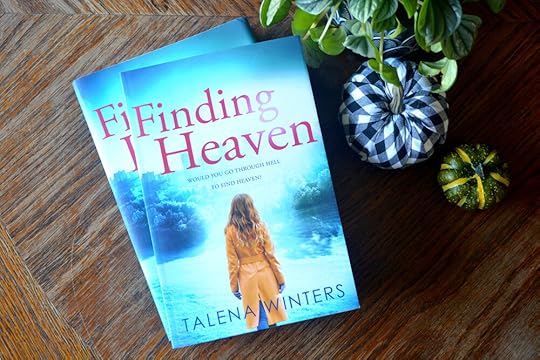
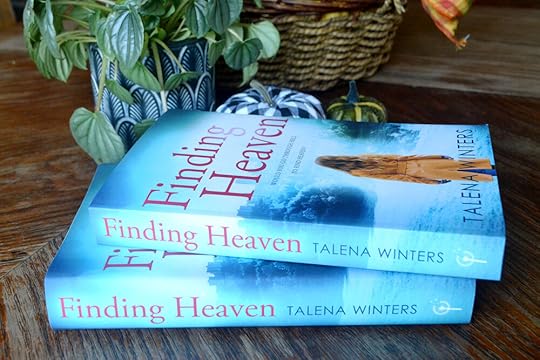
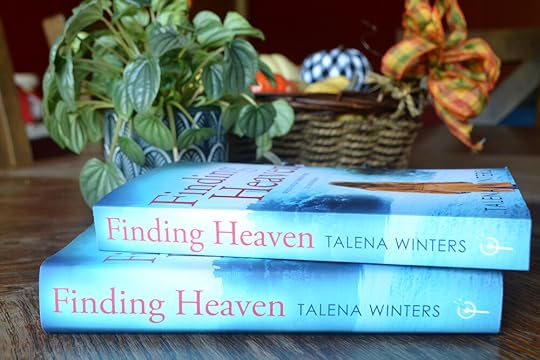
One of the things I did accomplish last year was to recover every single one of my books. But even though I updated the eBook cover for Finding Heaven last October, it wasn’t until last month that I finally made the print wraps. I’ve also had the interior updated to make the print edition less bulky and heavy.
My proofs of the new print versions arrived yesterday, and they’re gorgeous. They will be available to order online as of October 1. However, the distributor has already warned of severe delays on printing and shipping books over the next few months because of deficits in the supply chain, so be warned the ship time could be long. I do have a few copies in hand that I could sign, personalize, and send to you, which would be much faster. (Perfect for gifts or a keepsake.) You can buy those through my Bookshop.
Personal UpdateThe two major events of the past several months were that we managed to bring Jude home from the west coast at the end of August and that my mom had major surgery for cancer on September 1.
This made for a very full few weeks. Because of the fires that have ravaged the interior of British Columbia all summer, we weren’t even sure we would drive to BC to get Jude. He strongly preferred us to drive rather than fly him home, and we wanted a chance to get out of the house and make some memories as a family, but the cost and anxiety surrounding the trip almost deterred us.
But, we went. As it turns out, the fires were not a problem. The escalating cases and restrictions around coronavirus were a concern, but still not the biggest challenge, which involved an adventure on the Coquihalla Highway near Kamloops when our serpentine belt frayed.
Long story short, we were five minutes out of the city when it happened. We were able to safely pull into a cross-meridian access on the Coquihalla, which has no shoulders and which has been called the Canadian Audubon. AMA towed our vehicle to a garage and the rental company sent a shuttle to pick us up, which arrived while the tow truck was still loading our vehicle.
Our biggest concern was whether or not we’d be able to get the car fixed before we came back through Kamloops four days later, but after calling about five garages that said they couldn’t even look at it for a week, we found one of the best garages I’ve ever dealt with (Franco’s, highly recommended). They promised to get the car done before the weekend (it was finished the next morning) and worked with us to arrange pickup on Sunday when the shop was closed.
All in all, despite the extra stress and expense, the situation was resolved about as painlessly as something like that can be. And now we have a story to tell. Plus a middle-of-the-Coquihalla family selfie (which Jude insisted we all looked way too happy in, considering our car had just broke down on one of the scariest highways in Canada).
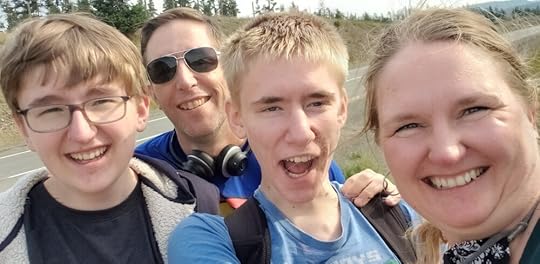
How the Winters family does “we’re stranded in the middle of the highway” selfies.
We didn’t have time for many “extras” on the trip, but we did get to spend a day at Capernwray Bible Centre, the college Jude went to last year and stayed to volunteer at all summer. It’s a beautiful property and a big one, so the stay involved a lot of walking up and down hills. I was pretty sore by the time we left. But it was nice to finally see the place where my husband and so many of my friends (and now my kid) had gone to college. Noah and Jabin are both seriously considering going there for a year now too.
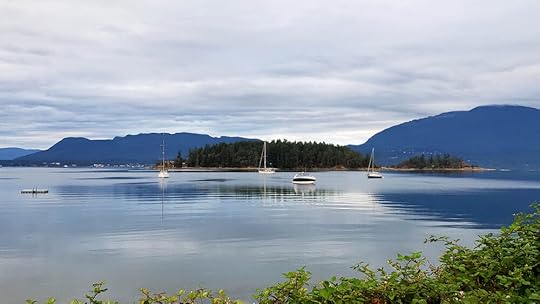
Our view at breakfast while sitting on the patio of the main hall of Capernwray. That’s Vancouver Island in the background. This would be easy to get used to. :-)
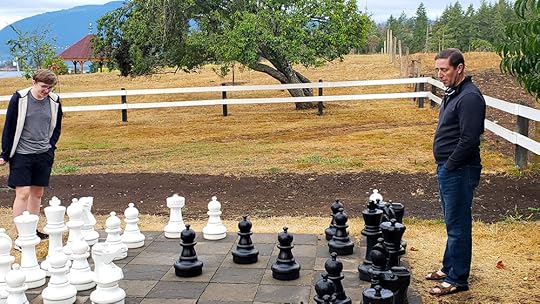
Jabin and Jason pass the time while waiting for breakfast.
We got home on August 31 and my mom’s surgery was the next day in Edmonton. I had originally planned to go down several days later and be her support person for about five days while her hubby had to come home, but I ended up only staying in Edmonton two nights. During that time, my husband’s truck left him stranded and he wasn’t able to borrow a vehicle, so I had to come home so everyone could get to school and work. By then, Mom was doing much better—not great, but feeling okay being left with just the ICU staff. And Mike was back the next day, anyway.
Then, only a few days after I got home, our province went into a state of medical emergency due to COVID-19. The government was looking for ICU beds wherever it could find them. They did not send Mom home early, for which I’m grateful, and I’m also grateful she got her surgery when she did. Most surgeries have been cancelled/postponed because of the crisis. And I’m not sure Mom’s could have been delayed much longer and had a positive outcome. As it is, she’s lost many of her internal organs and has a long recovery ahead of her.
And, while all this is going on in our family, there are families I care about that are in their own crisis. I have a friend in the ICU in Calgary with COVID-19. A dear little boy from a family from our church is fighting cancer and he and his mom are staying in Edmonton while he receives treatment. Other families I’m acquainted with have kids fighting cancer or other issues. People are dying from the vaccines or dying from COVID, and you take your chances either way. There’s a world divided by mistrust and misinformation (which are definitely related to each other), a world that I feel a heavy burden for.
Heavy. That’s a good word for how I’ve often felt this year. Like the burdens I carry have multiplied. No wonder I’ve only had the energy to focus on the essentials.
I’ve been holding on to the things that I have to be grateful for—my husband. My kids. My warm and beautiful home. My friends. My extended family, though I mostly only stay in regular contact with my mom and sister and sometimes my dad. The pandemic has been hard on connections, and harder on connections that were already difficult to maintain.
I’m thankful for my work and for the support networks I’ve been blessed with. I’m thankful for small mercies and large ones. Though I could wish for a few more large ones these days.
Today, I’m thankful for the sun shining in my window and the golden leaves of the poplar trees against the blue sky. And I’m thankful that, no matter how long I neglect you, dear blog, you never complain. Like Ol’ Faithful, you just patiently wait until the next time I can spare a few moments to poor out my woes to you.
Despite how many dark clouds are all around these days, there are still silver linings to be discovered.
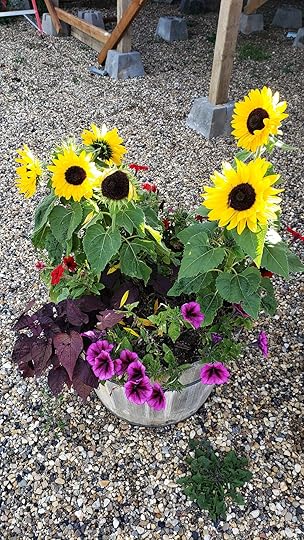
Not only did the plague of grasshoppers not really damage my planters too badly, but I got some volunteer sunflowers from previous years. That has been such a lovely blessing, since I never managed to get any planted in here and they’re one of my favourite flowers.
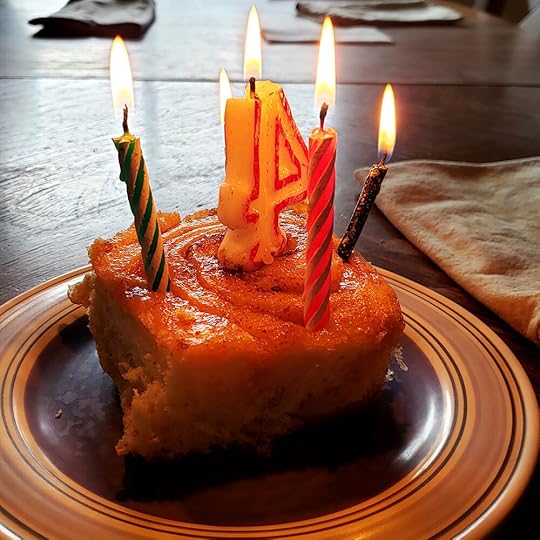
And I turned 44 in August too. This was my birthday treat from my family, lol.
July 15, 2021
A Matter of Perspective
A haze of smoke hangs in front of the sun today, turning the word a sickly shade of yellow. It’s coming from B.C., which is experiencing a terrible wildfire season after the recent heatwave.
There’s always something.
I’m making progress on The Sphinx’s Heart, and so far (through no real fault of my own), have managed to stay ahead of my editor. Today, I should pass the halfway point in the story, though I confess that it won’t be quite halfway in the word count—so, I guess the second half is a little overwritten? I’m not sure what to think of that. Either that or I’m calling the wrong event the midpoint, lol.
Also, at my editor’s request, earlier this week I figured out the remaining word count and did the mental math for how long it will be before I’m finished. At my current rate of revisions. I’ll be revising this for the next seven weeks or so, assuming I’m able to stay at optimal speed. Realizing this was a little devastating at first, because I just want to be done already! But then I talked myself down (or up? Or away?) from the spiral thusly:
This whopping book is probably going to be close to 300,000 words when I’m done. That’s equivalent to:
1. Six romance novels.
2. Four thrillers.
3. The shortest George R.R. Martin book. (A Game of Thrones, first in the Song of Ice and Fire series, came in at 298,000 words.)
No wonder it took two years to write. No wonder it’s taking months to revise. I need to cut myself some slack already.

In other news, my second son, Noah, started a summer job last week that’s basically full-time office hours. He leaves with my husband in the morning and comes home with him in the afternoon. So it’s just me, Jabin, and the pets home most of the day, and the cats have been spending most of their time outside with the dogs and huntable critters lately. Makes for a nice, quiet day.
Maybe that’s why I’m spending so much time connecting to people on Facebook. :-D
Anyway, so there’s nothing earth-shattering to report. I get to revise a really fun part of my book today, so I’m going to go get after it. And then later, I get to finish up an editing project for a client that is also pretty fun.
Some days I just pinch myself that this is what I get to do for a living.
Happy Thursday, friend! May you find something to be grateful for today!
P.S. For my epic YA fantasy peeps, I finished watching Shadow & Bone on Netflix last weekend, and it was awesome. I haven’t read the series, but I’m going to have to now. I don’t want to wait for the next season to see what happens!

Just a girl on a day.
June 29, 2021
It's still hot. Here are some story recommendations to distract you...
Yesterday, the temperature broke heat records around Western Canada. (And probably the American Northwest, too, if I had to guess—I haven’t been watching the temperature records, but my sister in NW Washington said yesterday reached 111° F, which is stupidly, blisteringly hot for that area. Or any area.) Today is supposed to be even hotter here. (I think the heat is breaking a little on the coast.)
I just checked my weather app, and it told me the record high for this day for my town was in 2015, coming in at thirty-two degrees. Twenty-six out of the last thirty years, it’s actually been raining today.
Not this year. Nope. This year, we’re expecting forty degrees. It’s 8:30 in the morning, and it’s already twenty-eight.
I’m worried for people. I’m worried for those who don’t have ways to cool down or who don’t drink enough water.
I know humans have survived temperatures like this, and I’m not so worried I’m pacing my house or anything. Not much point in that—there is almost nothing I can do to help others weather this heat wave other than provide a small bit of distraction.
And my son the gardener in BC survived the hottest day they’re expecting out there yesterday—not that today is cool, but 32 feels so much cooler than 42, y’know? So, even though he keeps insisting on calling his sunburn an “epic tan”, I’m a little less worried about him today.
Okay, enough about the worry and the heat.
Except, as my sister pointed out yesterday, if this is what the end of June is like, what will happen in July?
(And... wildfires, amiright?)
Okay, on to the distraction. Despite the heat yesterday, I managed to revise four chapters of The Sphinx’s Heart. I’ll be checking the last chapter this morning in the relative coolness, because the heat makes my brain dumb.
*Note: the book links below are universal links through Books2Read. If you’ve never clicked one of their links before, you’ll have to tell them which store you prefer to purchase from the first time. After that, it will take you right to that store’s listing unless you change your preferences. Also, full disclosure, I’m an affiliate on Amazon.com, Amazon.ca, or Amazon.uk.co, which means I’ll get a few cents if you purchase the book there after looking at it through my link.
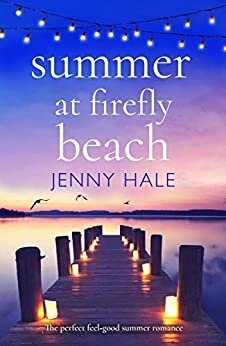
I had a nice chat with my friend (and fellow author) Jessica Renwick yesterday, and she recommended a book I can’t wait to read: Summer at Firefly Beach by Jenny Hale. It sounds like a wonderful, uplifting romance with a ton of heart.
I’m currently listening to Under Currents by Nora Roberts. I’ve been at it for over a month, because the first seven chapters are pretty tough to listen to because of the graphic physical and emotional abuse the then-teenage protagonist experiences. It’s better where I’m at right now, nearly at mid-point, I think, but I have no illusions that this is but the calm before the storm—I analyze stories for a living, and I know Nora didn’t get to be as successful as she is by ignoring good story structure. That beginning was setting up an epic ending.
But, now that I know a bit better what to expect, I’ll be fine. I just didn’t know what to expect when I started—I got the book on a Chirp deal. I was curious about both Nora’s work, which I’ve never read before, and the narrator, January LaVoy, whom I knew is very popular, but had never heard any of her work before either (other than a few samples). I like both.
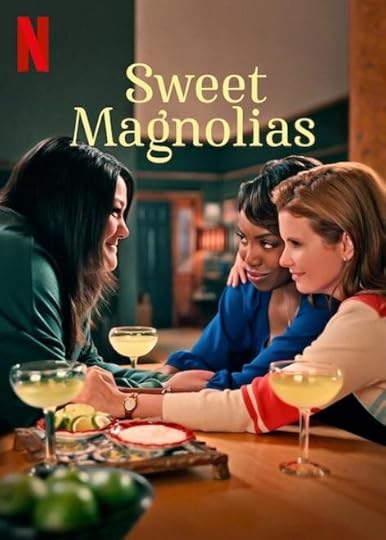
But as soon as I’m finished this one, I think I’ll pick up Jenny Hale’s book. I find myself intensely craving stories of connection and warmth and love these days—probably an after-effect of pandemic isolation and stress. I binge-watched Sweet Magnolias on Netflix in a single day about six weeks ago, and it was wonderful—I hadn’t binge-watched anything in years. (The last thing before that may have been Drop Dead Diva, and the star of that show, Brooke Elliott, was exactly why I was so interested in Sweet Magnolias. She did not disappoint, but neither did the rest of the show. So great.)
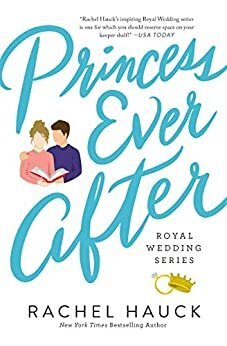
Anyway, that’s probably enough rambling for one morning. However, if you love reading or watching stories like this, please give me some more recommendations in the comments. I’ve found very few sweet romance authors I enjoy—I find many of the stories I’ve tried too poorly written to continue reading, so I tend to follow others’ recommendations now instead of just giving things a whirl. (I highly recommend Rachel Hauck, by the way. Fan for life here. She writes inspirational romantic books in a variety of genres. I started with Princess Ever After on audio—the narrator was one of the best I’ve ever heard.)
Alright, friend. Happy Tuesday, and stay cool!
Thumbnail photo by Riss Design via Unsplash .
June 28, 2021
Hot Alberta Summer and Sphinx's Heart Update

One corner of my desk this morning. Of course, this little mermaid’s name is Calandra. :-)
A little over a month ago, my husband and our neighbour, Brian, put up the rather generous deck that came with our house, just in time for the first really nice weekend we had. Jason and I spent a relaxing Sunday morning before (online) church, sitting on the deck, talking and drinking coffee.
View this post on InstagramA post shared by Talena Winters (@talenawinters)
I’m very grateful for that deck, even if we still have to drag our dining room chairs out there when we want to use it—especially this week.
Because this week, it’s supposed to reach almost 40 above. (That’s Celsius. In Fahrenheit, that’s 104.)

The forecast last Saturday. I think it’s been warmer than predicted.
When you live in northern Alberta, you’re prepared for 40 below. You may not like it, but you expect it to happen once in a while.
But 40 above?
Nope.
No one here has AC. And all those windows in my new house that I adore the other 51 weeks of the year? They’re kind of working against us now.
If we had a working barbecue and deck furniture, I’m pretty sure we’d be living out there in the mornings and evenings right now. But, we don’t. Now I know what the goal is for next year.
(And I’m trying not to worry about my oldest son, who’s volunteering as a gardener on the coast—working long days outside in temperatures already well above 40 degrees. Sounds like it’s been a bit of a trial, but he’s avoided heat stroke so far.)
Anyway, while I’m basically just talking about life, the universe, and everything, it’s probably time I update the blog about my writing.

I finished the first draft of The Sphinx’s Heart on June 3, which clocked in at about 272,000 words. Ever since, I’ve been slogging through the revisions, trying to keep one step ahead of my copyeditor. (To be honest, I’m trying to work far ahead of my copyeditor, but that hasn’t happened yet. It’s been a lot of work, y’all!)
See, I finished the first draft only four days before the date I’d booked with her. Graciously, she let me push that back by a week, but that still wasn’t enough time to make much headway. Most of that week was spent just figuring out what the problems were and how to fix them. I’m glad I’d had a developmental assessment on the first 3/4 of the manuscript already (from a different editor). After finishing the first draft, I took a few hours off to celebrate, then read the critique. Most of the next week was spent overhauling everything. Then I began the nitty-gritty work, which I’ve been doing ever since.
The story is getting better, and I’m grateful. I have the book on preorder on Amazon, Apple, and Barnes & Noble already for October, and I’ve already used up my grace “you can move this date once because the pandemic is hard” option with Amazon so that’s the definite date of release unless I want to cancel the preorder (and I don’t), which means the absolute last day I have to get the copyedit finished is September 13.
I’m optimistic I can get the story whipped into shape and ready to release on time. But optimistic isn’t the same as confident—everything with this book has taken so much longer than I wanted. Blame the pandemic, blame me figuring out my writing process, blame the stress of the last year—they’d all be reasons why. I feel like I’m still figuring things out, but at this point, I just so badly want to be finished with this book. I love it, but I need to work on something new.
At the same time, I’m terrified of putting it out in the world… but that’s just normal. I’ve learned to live with impostor syndrome. ;-)
Anyway, June 3 was also a significant date for another reason—it was the sixth anniversary of Levi’s death. While finishing the manuscript that day meant the day itself wasn’t bad for me, I’d certainly had some rough moments leading up to that over the previous month or so—rough enough that I’ve been talking to a therapist for the last few weeks. I probably should have started that much sooner, as I’m feeling so much better now. Still, I hope to develop some new skills and tools for dealing with that downward spiral the next time it comes around.
Anyway, I need to get editing. Happy Monday, friend!
Wherever you are, I hope you find a way to stay cool.

My garden this year consists of container flowers on my deck. I’m loving these dwarf sunflowers!
June 25, 2021
Weird Things I'm Grateful For: Toilets
When was the last time you thanked God for your toilet?
I admit, this isn’t something I make a regular practice of. But of all of the advancements of modern man, the two that are the top of my list are indoor plumbing and electricity, in that order.

Photo by Donald Giannatti, Unsplash.
I just returned from a two-day trip with my mom so she could get her weekly high vitamin C treatment in Edmonton. (The treatments are helping her body deal with the cancer she’s fighting.)
On this particular trip, we were also hauling a rather unfortunate-looking Jeep down to my cousin Colby, who’d purchased it from someone near where Mom and I live and who happens to be pretty talented at turning unfortunate-looking trucks and jeeps into lean, mean, off- and on-roading vehicles. I haven’t seen Colby much in the last, oh, two decades, and I’d never met his wife, Emma. So after the delivery was made, Mom and I were grateful to have a visit and get to know the two of them better.
And that’s when Emma told us about the year her and Colby lived off the grid.
She’s writing a memoir of the experience (which I very much look forward to reading someday), but it was clear from the few stories she told that dealing with outhouses and chamber pots in Ontario winters is going to play a major role in the narrative.
A very funny one.
It reminded me of the stories my dad would tell of using the outhouse in the winter for his family of eleven. So I asked Mom (from a family of seven) about whether or not she’d had an outhouse growing up.
Yes. Yes, she did.
Apparently, to prevent the whole “having to go outside” thing, though, they also had a pseudo-toilet in the house, which was essentially a holy chair (see what I did there?) over a metal bucket. One of her older brothers was responsible for emptying the bucket before it got too full—and sometimes he’d leave it a little too long. This usually resulted in a mess on the stairs or some such.
I don’t think you need that much imagination to feel a little dry heaving coming on.

Photo of an Ontario outhouse courtesy of Jennifer Lim-Tamkican, Unsplash.
I’ve used outhouses, obviously. They’re the most practical form of pit stop in national parks and permanent camps, and the bright blue (or pink, or whatever colour) plastic port-o-potties are a vital part of every temporary public event like fairs and concerts. I’ve even used Indian toilets, which is essentially an outhouse you squat over instead of sitting on.
But you use those in warm weather. Yes, they stink. Yes, I’ve tested my lung capacity holding my breath just so I can relieve my bladder. But I’ve never had to bare my behind in the middle of the night at -40 just so I don’t have an accident.
I’ve even used less advanced restroom facilities than an outhouse—namely, going au naturel. Sometimes, you gotta. But that’s definitely not my first choice. An outhouse is still preferable to mooning oncoming traffic next to a road, or heading into the trees while camping in the wilderness (or your own yard, say, if you’re setting up a homestead from scratch *cough*) and using a leaf to clean yourself up with. I’ve hauled my own toilet paper in and out of places.
But, if your outhouse is down a steep hill in a part of the world where “winter” means layer upon layer of ice, and you have to clip on ice picks to your boots just to go pee? And then, on the way down to the outhouse at 1 a.m., you slip and end up sliding all the way down the hill on your elbows, and no one but you knows that if you don’t get up, you’re going to die from hypothermia if your bladder doesn’t explode first?
Well, thank God for my toilet.

German outhouse by Sandra Grünewald, Unsplash.
Of course, this may be a specifically female concern. For a funny take on the travails of finding an appropriate place to pee for women, check out the Where to Pee sketch from Christian & Nat.
(In case you’re interested, Emma makes beautiful crystal jewellery that she sells on Etsy. Check out Earth & Elm Jewellery on Instagram.)
Do you have any weird things you’re grateful for? Or funny outhouse stories to share? Leave them in the comments. I’m always up for a good laugh.
Happy Friday!
June 23, 2021
Message in a Bottle
The image on the screen freezes for the fourth time during the video call. Rural Internet is to blame. Ever since the trees between my house and the wireless Internet tower a mile away leafed out, the slightest breeze means our Internet is as stable as a toddler on new land legs.
Thank the digital tech inventors for wireless data.
Except . . .
I just reached my mobile data limit.
Oh no! I can’t even text her to tell her what happened!
I’m alone. Alone at home. All my connective roots to the outside world have been cut in a single blow.
I’m not used to this feeling of utter isolation, of being completely cut off.
But then I remember I’m not. I text my husband. He replies to my message in a bottle. We commiserate.
And then I’m fine. So I go let my cat out the door and pet my dogs on the deck.
They have no idea we’re stuck on an island.
But there’s a rescue ship on the horizon. The service technician is coming to move our antenna later today.
Until then, I pound out the words I won’t be able to send into the world until after I’ve been rescued.
It beats waiting alone.
Day 2:The rescue ship wasn’t able to land.
No matter how many ways the service technician tried to get line of site to the nearest wireless tower, he couldn’t. He blamed Mother Nature.
“A lot of the calls I’m getting are because of all that rain we got last year. Those poplars grew two feet.”
Mother Nature is often the problem when one is a castaway.
But I’m still here, alone on my island. Thank goodness for my furry animal friends. If they start talking, I’ll know I’m in a Disney movie.
If you see me posting photos of my new friend Javacup, you know I’ve gone over the edge.
Meanwhile, how long before another rescue ship comes along?
Hard to say.
How long until the leaves fall off the trees?
Just kidding. We’re looking at other options. And I topped up my mobile data to get me by in the meantime. It’s an expensive way to email and make blog posts, and I guess I won’t be doing any YouTube research in the near future.
But that’s okay. I’m supposed to be editing a novel anyway.
That’s not the worst way to be a castaway—hunkered on an island with a good book.
I guess I don’t need to name a volleyball. I’m already talking to the voices in my head.
And they talk back.

Photo Copyright: Gino Santa Maria



